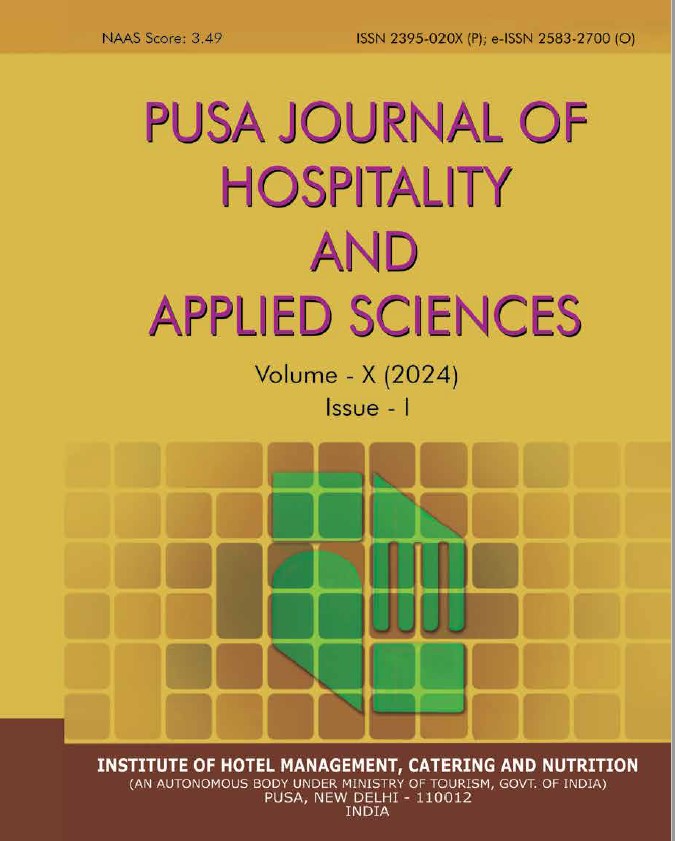Determining The Best Conditioning Method For Cut-Roses
DOI:
https://doi.org/10.48165/pjhas.2022.8.2.6Keywords:
Conditioning, Cut-flowers, Floriculture, Loose-flowers, Vase-lifeAbstract
Background: Conditioning is an important step in the flower maintenance post-harvest. It helps in increased storage time and better shelf-life of the cut flowers. Conditioning provides the cut flowers with certain nutrients required for their sustainability and prevents them from getting infected from some disease-causing microbes. People generally don’t pay much importance to this step which leads to early decay and loss of their hard-earned flowers. Good conditioning can help sort out this problem and help prevent the cut-flowers from getting bad, by providing ambient conditions for the flower. Objective: The objectives of this study were to determine the best conditioning method for cut-Rose flowers through scientific experiment and getting the views on the flower behavior under different conditions based on the visual parameters. Methodology: The methodology undertaken for this work was a combination of experimental as well ob servational study. The experimental study was conducted in the housekeeping lab of IHM Pusa under the guidance of the research guide and lab attendant. The observational study was conducted through a google form questionnaire and was filled by some experts of the domain based on the visual parameters from the experiment conducted. Results: The most favorable conditions for the cut-Rose were provided by SET ‘C’ from the experiment conducted which contained a solution of sucrose, citric acid and bleach in distilled water. Also, based on the visual parameters SET ‘C’ was voted 69.04% as the best conditioner for cut-rose flower. Conclusion: Based on the results obtained from the experiment conducted and through the observations made, it was concluded that the mixture containing sucrose, bleach and citric acid proved to be helpful in conditioning of the flower in the best way, hence using the same can prevent the decay of cut flowers in a substantial manner, increase the vase-life and in-turn help attain sustainability.
References
Aaarts, J. F. T. (1957). On the keepability of cut flowers. Meded. Landbouwhogesch. 57(9), 1-62 2. Aaarts, J. F. T. (1957a). The development and
keeping of cut flowers after picking. Meded. Dir. Tuinb. 20, 690-701
Celikel., & Reid. (2002). Efficacy of 1-MCP (1-methylcyclopropene) and Promalin for extending the post-harvest life of Oriental lilies (Lilium x ‘Mona Lisa· and ‘Star-gazer·). Scientia Hort. 93:149–155.
Doi, M., & Reid, M. S. (1995). Sucrose increase the postharvest life of cut flowers of a hybrid Limonium. Hortscience 30, 1058- 1060
Halevy, A. H. (1976). Treatments to improve water balance of cut flowers. Acta Horticulturae. 64, 273- 280
Halevy, A. H., & Mayak, S. (1974). Transport and conditioning of cut flowers. Acta Horticulturae. 43, 32- 43
Halevy, A. H., & Mayak S (1981) Senescence and postharvest physiology of cut flowers—Part 2. Hortic Rev 3: 59–143
Reid, M. S., & Kofranek, A. M. (1980). Recommendations for standardized vase life evaluations. Acta Horticulturae. 113, 171-173
Rudnicki, R. M., Goszczynska, D. M., & Nowak, J. (1986). Storage of cut flowers. Acta Horticulturae. 181, 285- 290
Song, C. Y., Bang C., Chung S., Kim Y., Lee, J. & Lee, D. (1996) Effects of postharvest pre-treatments and preservative solutions on vase life and flower quality of Asiatic hybrid lily. Acta Hort. 414:277–
Staby, G. L., & Erwin, T. D. (1978) Water quality, preservative, grower source and chrysanthemum flower vase life. HortScience. 13, 185-187.
Staden, O. L., & Molenaar, W. H. (1975) The effect of different tap waters on the vase life of cut flowers. Vakblad Bloemist. 30, 21.
Van Doorn, W. G., & Perik, R. R. (1990) | 47 |
Hydroxyquinoline citrate and low pH prevent vascular blockage in stem of cut rose flowers by reducing the number of bacteria. Journal of the American society for the horticulture science. 115. 979-981.
Van Doorn, W. G., Zagory, D. & Reid, M. S. (1991). Role of ethylene and bacteria in vascular Blockage of cut fronds from the fern Adianthum Raddianum. Scientia Hort. 46, 161-169.
Van Doorn, W. G. (2001). Categories of petal senescence and abscission: a re-evaluation. Annals of Botany. 87: 447–456.so.
Weinstein LH, Laurencot HJ (1958) Senescence of rose II. Dark fixation of CO2 by cut ‘Better Times’ roses at different stages of senescence. Contrib Boyce Thomp Inst 19: 327.
Zelter, S., & Mayak, S. (1995). A method to quantitively monitor water movement through floral organs. Acta Horticulturae. 405, 75- 80.
Netherlands as the No. 1 exporter of flowers in the world https://oec.world/en/profile/bilateral-product/ cut-flowers/reporter/nld.
National Horticulture Database https://nhb.gov.in/








